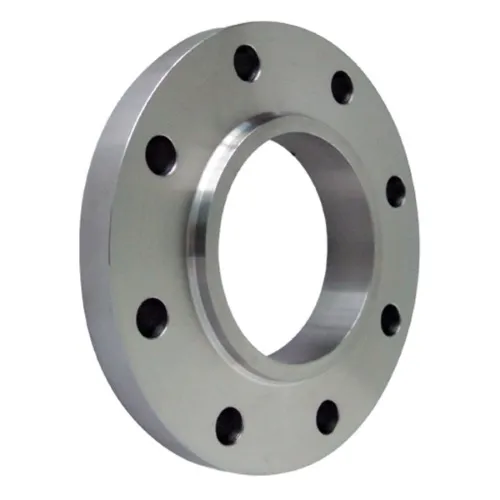-
Cangzhou Yulong Steel Co., Ltd.
-
Phone:
+86 13303177267 -
Email:
admin@ylsteelfittings.com
- English
- Arabic
- Italian
- Spanish
- Portuguese
- German
- kazakh
- Persian
- Greek
- French
- Russian
- Polish
- Thai
- Indonesian
- Vietnamese
- Zulu
- Korean
- Uzbek
- Hindi
- Serbian
- Malay
- Ukrainian
- Gujarati
- Haitian Creole
- hausa
- hawaiian
- Hebrew
- Miao
- Hungarian
- Icelandic
- igbo
- irish
- Japanese
- Javanese
- Kannada
- Khmer
- Rwandese
- Afrikaans
- Albanian
- Amharic
- Armenian
- Azerbaijani
- Basque
- Belarusian
- Bengali
- Bosnian
- Bulgarian
- Catalan
- Cebuano
- China
- China (Taiwan)
- Corsican
- Croatian
- Czech
- Danish
- Esperanto
- Estonian
- Finnish
- Frisian
- Galician
- Georgian
- Kurdish
- Kyrgyz
- Lao
- Latin
- Latvian
- Lithuanian
- Luxembourgish
- Macedonian
- Malgashi
- Malayalam
- Maltese
- Maori
- Marathi
- Mongolian
- Myanmar
- Nepali
- Norwegian
- Norwegian
- Occitan
- Pashto
- Dutch
- Punjabi
- Romanian
- Samoan
- Scottish Gaelic
- Sesotho
- Shona
- Sindhi
- Sinhala
- Slovak
- Slovenian
- Somali
- Sundanese
- Swahili
- Swedish
- Tagalog
- Tajik
- Tamil
- Tatar
- Telugu
- Turkish
- Turkmen
- Urdu
- Uighur
- Welsh
- Bantu
- Yiddish
- Yoruba

Oct . 02, 2024 13:52 Back to list
Overview of ASTM A106 Grade B Pipe Specifications and Applications
Understanding ASTM A106 Grade B Pipe Specifications
The ASTM A106 Grade B pipe is a standard specification developed by the American Society for Testing and Materials (ASTM). This specification is widely recognized in the industry for steel pipes used for high-temperature and high-pressure applications. Understanding the specifications and characteristics of ASTM A106 Grade B pipes is critical for engineers, fabricators, and contractors involved in the design and construction of industrial piping systems.
Overview of ASTM A106
ASTM A106 outlines the seamless carbon steel pipe specifications for the conveyance of fluids under high temperature and pressure. The specification covers three grades A, B, and C. Among these, Grade B is the most commonly used due to its excellent mechanical properties and ability to withstand harsh conditions.
Chemical Composition
The chemical composition of ASTM A106 Grade B pipe is crucial to its performance. It is primarily composed of carbon (C), manganese (Mn), phosphorus (P), sulfur (S), and silicon (Si). The typical chemical composition for ASTM A106 Grade B includes the following
- Carbon (C) Maximum 0.26% - Manganese (Mn) 0.60 to 0.90% - Phosphorus (P) Maximum 0.04% - Sulfur (S) Maximum 0.05% - Silicon (Si) 0.10 to 0.40%
The controlled amounts of these elements help ensure the steel has adequate hardness, strength, and ductility for demanding applications.
Mechanical Properties
The mechanical properties of ASTM A106 Grade B pipes are fundamental to their application
. The standard specifies yield and tensile strength requirements- Yield Strength Minimum 35,000 psi (240 MPa) - Tensile Strength Minimum 60,000 psi (415 MPa)
These properties ensure that the pipes can withstand significant stress and load without deforming or failing. Additionally, the elongation requirement for the pipe in a longitudinal direction is a minimum of 20%, which indicates the material's ability to deform without fracturing.
Manufacturing Process
astm a106 grb pipe specifications

ASTM A106 Grade B pipes are produced using the seamless manufacturing process, which involves heating a solid round steel billet and piercing it to form a hollow tube. This method ensures that the finished pipe is free of seams, leading to greater strength and reliability. The pipes can be cold drawn or hot finished, depending on the required dimensions and qualities.
Dimensions and Schedules
The ASTM A106 Grade B pipes are available in various sizes and wall thicknesses. The nominal pipe sizes (NPS) range from 1/8 inch to 48 inches, with corresponding schedule numbers that denote the thickness of the walls. The most common schedules for Grade B pipes are Schedule 40 and Schedule 80, which offer differing wall thicknesses suitable for various applications.
Applications
Given its high strength and thermal resistance, ASTM A106 Grade B pipe is widely used in various industries. Common applications include
- Oil and gas transmission - Chemical processing - Power generation - Refineries and petrochemical plants - Heating and cooling systems
These applications highlight the pipe's capability to handle corrosive and high-pressure environments, making it essential for infrastructure development.
Inspection and Testing
To ensure the quality and reliability of ASTM A106 Grade B pipes, rigorous inspection and testing procedures are implemented. Common tests include
- Hydrostatic Testing Pipes are subjected to water pressure to check for leaks. - Non-Destructive Testing (NDT) Techniques such as ultrasonic and radiographic testing help detect internal defects without damaging the pipes. - Visual Inspection Straightness, surface finish, and other visual characteristics are assessed.
These evaluations guarantee that the pipes meet ASTM A106 specifications and are fit for their intended applications.
Conclusion
In conclusion, ASTM A106 Grade B pipe specifications play a vital role in ensuring the safety and efficiency of various industrial systems. The combination of suitable chemical compositions, mechanical properties, and rigorous testing outlines its suitability for high-pressure and high-temperature applications. Understanding these specifications helps professionals make informed decisions when selecting piping materials, thus contributing to the success of their projects.
Latest news
-
ANSI 150P SS304 SO FLANGE
NewsFeb.14,2025
-
ASTM A333GR6 STEEL PIPE
NewsJan.20,2025
-
ANSI B16.5 WELDING NECK FLANGE
NewsJan.15,2026
-
ANSI B16.5 SLIP-ON FLANGE
NewsApr.19,2024
-
SABS 1123 FLANGE
NewsJan.15,2025
-
DIN86044 PLATE FLANGE
NewsApr.19,2024
-
DIN2527 BLIND FLANGE
NewsApr.12,2024
-
JIS B2311 Butt-Welding Fittings LR/SR 45°/90° /180°Seamless/Weld
NewsApr.23,2024











